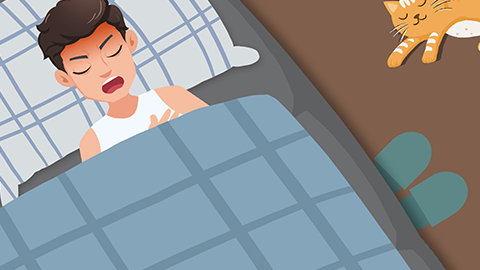What are the symptoms of tuberculous meningitis in adults?
Generally, after adults develop tuberculous meningitis, common symptoms mainly include headache, fever, meningeal irritation signs, neurological dysfunction, and disturbances of consciousness. These symptoms gradually manifest as the condition progresses, so timely attention to bodily abnormalities is necessary. The specific analysis is as follows:

1. Headache: Headache is a common and prominent early symptom of tuberculous meningitis in adults, often presenting as persistent dull or throbbing pain. The pain typically occurs in the forehead and bilateral temporal regions, and some patients may experience pain throughout the entire head. As the condition worsens, the headache intensifies, particularly noticeable in the morning or during physical exertion.
2. Fever: Patients often develop low-grade or moderate fever, with body temperature generally ranging between 37.5°C and 38.5°C. Fever is usually persistent, although some patients may present with afternoon low-grade fever accompanied by night sweats. If the condition progresses or is accompanied by other infections, body temperature may rise above 39°C, leading to persistent high fever.
3. Meningeal irritation signs: This is a typical symptom of tuberculous meningitis, mainly manifested as nuchal rigidity, positive Kernig's sign, and positive Brudzinski's sign. These signs occur due to inflammation of the meninges caused by irritation from tuberculosis bacteria.
4. Neurological dysfunction: Some patients may experience symptoms of nerve damage, such as vision loss, double vision, and hearing impairment, which result from inflammation affecting cranial nerves like the optic and auditory nerves. Other patients may develop limb weakness, unsteady gait, limb numbness or tingling, and in severe cases, paralysis may occur.
5. Consciousness disturbance: Patients with severe illness may experience altered consciousness. Early symptoms often include fatigue and drowsiness. As the disease progresses, it may develop into confusion, and in severe cases, the patient may fall into a coma, showing no response to external stimuli, which can endanger life safety.
It is recommended that patients seek timely medical attention when experiencing the above symptoms to establish a clear diagnosis. During treatment, medication must be strictly taken as per medical instructions, avoiding self-discontinuation or dosage adjustments. Daily, patients should maintain a quiet and comfortable resting environment and ensure adequate nutritional intake, especially sufficient protein and vitamin supplementation, to help the body combat the disease.




